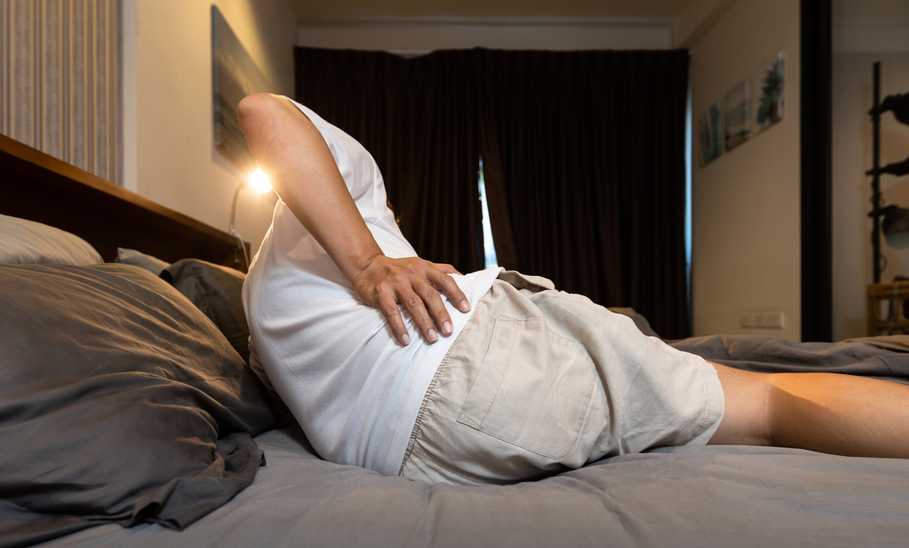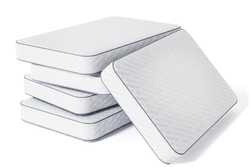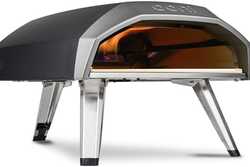How To Sleep With Lower Back Pain: Advice From the Experts

Our evaluations and opinions are not influenced by our advertising relationships, but we may earn a commission from our partners’ links. This content is created by TIME Stamped, under TIME’s direction and produced in accordance with TIME’s editorial guidelines and overseen by TIME’s editorial staff. Learn more about it.
Back pain, plus the loss of sleep it can cause, is a brutal cycle of misery. You need rest to allow your back to recover, but if you’re unable to get—and stay—comfortable, your lack of shut-eye can exacerbate inflammation of your muscles and cause another round of spasms and pain. Whether you are struggling to heal from a slipped disc or just have garden-variety lower back pain, there are ways to relieve back pain and get a good night’s sleep.
At some point in their lives, 80% of people will experience back pain due to an accident, problems with posture, lack of exercise and core strength, and muscle and ligament strains. As someone who’s struggled with lower back pain for years, I understand the power of solid sleep and how it can help speed up the recovery process of back spasms.
I reached out to the experts and spoke with orthopedic doctors and physical therapists to get advice on the best way to sleep if you have back pain and some positions to avoid, as well.
Sleeping positions and mattresses for back pain can impact rest, and the right combination may help reduce or relieve back pain.
The Mayo Clinic suggests side sleepers pull their knees up and use a pillow between them to align their shoulders, hips, pelvis, and spine. Experts at Mayo also suggest using a full-body pillow. When I struggle with lower back pain, I like to sleep with a pillow between my knees for extra support. If you’re looking for a knee pillow, read our helpful guide.
“With a supportive mattress and pillows for positioning, side sleepers can typically accomplish adequate alignment and may get resolution of back pain,” shares Ellen Wermter, family nurse practitioner, diplomate in Behavioral Sleep Medicine, and spokesperson for the Better Sleep Council.
The Mayo Clinic says you'll want a supportive neck pillow to keep everything in alignment, so consider also using one under your knees. Back sleepers need to keep the natural curve of the spine. “Back sleeping is considered best for spinal alignment and can reduce back and neck pain,” says Wermter.
According to medical studies, spine experts, and physical therapists, this is a position to avoid if you suffer from back pain. It doesn’t follow the natural curve of your spine, throwing off your alignment. In addition, it can add stress to the lower back, which in turn causes more pain.
“Sleeping positions can certainly affect low back pain, but frequently, sleeping surfaces matter even more. Using a firm, flat sleeping surface is often better for the back than softer, flexible surfaces, shares Nick Jain, MD, a board-certified orthopedic spine surgeon at DISC Sports & Spine Center in southern California.
When I struggled with lower back pain, getting a good night’s sleep was critical to ending the muscle spasms in my lower back. Unsurprisingly, sleep and back pain are intertwined, and studies show sleepers who struggle with back pain have a difficult time sleeping through the night and getting the restorative sleep their bodies need. Sleepers with back pain may have difficulty finding the right sleep position for the ultimate comfort and relaxation, which is critical for sound sleep.
Studies have found that a lack of sleep increases the risk of inflammation, which can worsen back pain. Rest brings relief to all kinds of pain; without it, individuals struggling with a combination of pain and lack of sleep can get trapped in a vicious cycle. Discuss sleep disturbances, including insomnia, with your orthopedist or other doctor to find solutions.
Adjusting how you sleep can help with back pain and improve sleep quality. If you sleep on your back, try putting a pillow under your knees to keep your spine aligned, says Brittney Ferri, PhD, OTR/L, occupational therapist at the National Council on Aging (NCOA). “Side sleepers might benefit from placing a firm pillow between their knees to keep their hips and spine in line. Stomach sleepers can use a thin pillow under their lower abdomen to avoid straining their back,” she shares. “Make sure you have a good mattress and pillows that provide enough support. Try to avoid twisting and turning during sleep.”
Dr. Ferri also suggests “establishing a bedtime routine with a hot bath or gentle stretches/yoga, [which] can help relax your muscles before sleep. Better sleep means less back pain and a healthier you overall."
Besides investing in a quality mattress and pillow designed to provide comfort for your preferred sleep position, there are other ways to help those suffering from back pain while trying to rest.
“I recommend utilizing pillows to support your body in a position that alleviates your symptoms. In most cases, back pain occurs at the end ranges of motion, so to sleep comfortably, supporting your spine in the mid-range or neutral position is usually effective,” shares Rick Douglass, PT, DPT, OCS, FAAOMPT, physical therapist and Clinical Officer for FYZICAL Therapy & Balance Centers. “When you are on your back, putting a pillow or small wedge under your knees will keep your back from arching too much.” Dr. Douglass adds, “The same pillow can be used between your legs when you inevitably roll to one side. The pillow between your legs will keep your pelvis from dropping towards the side you are sleeping on.”
When you struggle with back pain, it’s wise to see a doctor to rule out something more serious than a back spasm because an orthopedist will have access to tools to identify the problem. “Standing lumbar X-rays and MRIs can often provide physicians and surgeons information as to the causes of back pain and help them make a diagnosis to lead you to the right treatment,” says Dr. Jain, “as once the cause of back pain is identified, appropriately tailored treatment can begin.”
The information presented here is created by TIME Stamped and overseen by TIME editorial staff. To learn more, see our About Us page.



